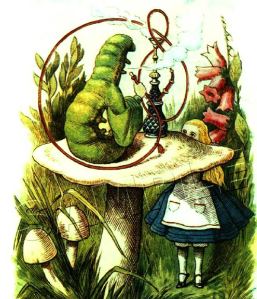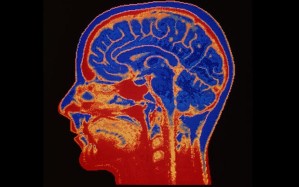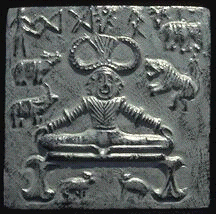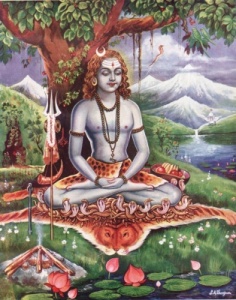Hone your Awareness, clean your awareness.
The purpose of life is to cleanse the mind of false ideas.
Even the waking state is clouded by irrelevant thoughts and memories, most of the time. So, usually the mind is in a dreamy- reverie like state, pounded by schools of thought, semi-distracted even when people are awake, doing chores, moving around, answering questions during their daily lives.And don’t ask what happens to awareness when people are semi-conscious in their Dream State, lying down like logs, when their bodies are torpid due to Sleep-Paralysis.
Yes, we are paralyzed daily during our sleep. The brain withdraws (in our sleep) the various functions from the nerves and muscles that control movement during the waking state. This state of sleep-paralysis is a natural measure to provide rest to the body muscles (in our throat, chest, hands, legs, etc.) and to protect the body from accidents. The brain makes sure that the muscles are relaxed and immobile, before it brings-on the dream state. We don’t see, or, hear, or, perceive anything of the external world when we fall asleep. The sense organs sort of withdraw like the limbs of a turtle, during the dream state, as we don’t need them anymore. If we physically move around in dreams, we may injure ourselves. So, we have sleep paralysis.

Our organs of knowledge and action are all arrested during our sleep. According to Vedanta Philosophy, the sense organs for knowledge (called as, Gyan-indriya) are: eyes, ears, nose, tongue and skin; and the organs of action (Karma-Indriya) are: Voice-box, hands, legs, anus and sex-organ. The mind itself is the eleventh sense-organ. Without the connection of the mind, we cannot perceive anything at all. Think of the instances, when your friend said something loudly, yet you didn’t hear anything, as your mind was elsewhere.
Only during certain dreams do the sense-organs react due to intense impulses from the brain. For example, the hands or, legs, or, the whole body jerks when we perceive strong sensations of falling or, jumping in dreams. Our eyes move (the dream state is characterized by Rapid Eye Movement, REM ) with the eyelids closed, as if to follow the sequence of dream-scape. But we don’t see dreams through our physical eyes, the REM is only an instinct. The brain projects the dreams and it is also the observer. Mandukya Upanishad of Vedanta explicitly deals with the 4 states of the mind. I feel amazed at the wisdom of the seers who existed 5000 years ago. The Vedanta and Raja Yoga philosophy are rich in human psychology. And the Yoga Sutras of Patanjali have simply dissected the mind and cross-analyzed it in all ways possible. It should be the Holy-Bible of psychology for scientists, if they can understand it.
Actually, we create the series of events in ordinary dreams due to Association. One object seen in a dream is associated to many things, memories & events in our lives, also, each of us have many preconceived ideas attached to certain symbolic objects. Those objects seen in a dream trigger the vision of other objects and set of circumstances and hence one thing leads to another and the dream unfolds.
But the main thing in our lives is Awareness, or, consciousness. God, Shakti, power is consciousness. The soul of a living being is also consciousness.
Ya Devi sarva-bhuteshu Chetana-iti abhidhiyate,
Namastasyai, Namastasyai, Namastasyai namo namah. (Markandeya Chandi, Chapter 5)
Meaning: O Supreme Goddess, you are the consciousness in all living beings, I bow to you.
Now consider this. The amount of Awareness that we experience or, exercise in waking state is weak as it is. In dream state it is so much weaker. And in Deep Sleep state, called Sushupti in Vedanta, it is almost unconscious. Inertness is the very nature of Deep-Sleep state. But even in deep-sleep, we are faintly conscious… we perceive a blankness (of thoughts), a vacuum, an endless dark sky, — yet it is not unconsciousness. We feel happy after a deep sleep and say, “I slept well”. We living beings are made of awareness, so we cannot be totally unconscious.
Now, when I remember the adept (siddha) Yogi Kedar-Nath Baba saying, “Swapna ka siddhi khota. Jagrut sachcha hai.” Meaning: The proficiency or, miraculous power you gain in a dream is false. Only when you attain something in the waking state, you may consider it to be true. I believe him now. He, being a realized yogi, cannot be wrong. We fall prey to reveries, passions, avarice in our waking state, as human weakness is within us. Imagine what happens to us in dreams, when our guard is down and we are so much more vulnerable to the dark side of the mind.
So one should hone his awareness, his chetana, and one must clean his “chitta”. Chitta is like the blackboard within the mind, where thoughts appear. Thoughts are waves, or, vibrations in the mind – Chitta-vritti in the language of Patanjali’s Yoga Sutras. We must work on the mind while awake, to consolidate the awareness (chetana) which is hidden in all of us. We must make the waking awareness very pure and strong. If somehow we manage to Remain Aware in Dream State (Lucid Dreams), where the inner world is so much more “malleable and ductile”, easier to attain what we want, the strong & purified chitta will protect us from getting wrong visions and impressions. It will stop meaningless hallucinations or, vulgar dreams and only induce divine visions. Our minds are most impressionable in dreams. Dreams control our moods and tendencies in the waking state. Divine visions uplift our spirit and purify our souls.
In meditation, which is like a focused dream, we get visions that change our lives. These visions are like packets of energy for the mind. They affect the psyche very deeply and change it permanently. Remember Patanjali’s Yoga Sutra: Yogas-chitta-vritti nirodha. Meaning, the actual process of yoga is to stop all thought waves. During deep meditation, a yogi arrests his thoughts – all thoughts except one. That one thought becomes a concentrated Super-Thought. It has immense power both in the inner world (the yogi’s mind) and also over the external world.This thought leads to realization. This state is called Savikalpa Samadhi.
Before meditation, we focus all thoughts on one subject and try to gain absolute knowledge of it through concentration. This single thought is the focus of meditation, or, Object of Meditation. When one can adhere to one thought for a long period of time, it is called Dharana (Mind holding on to one subject), gradually all other thoughts are eliminated. When this period is increased, it becomes Dhyana (meditation, or, the constant flow of one thought). Then a curious thing happens, the mind, the Chitta takes on the shape of the object of meditation. Hence it is said that in Samadhi, three become one, that is, Dhyana (the act of meditation), Dhyata (the yogi who is meditating) and Dhyeya (the subject in focus / object of meditation) fuse into one. One may say that the Chitta becomes the object of meditation. By so doing, the mind gains absolute knowledge & total control over the “object of meditation” in Samadhi state. This Samadhi is a Super-Conscious state. Also, Samadhi literally means, “Samyak-Adhikara”, total-control.
When the Yogi comes down, back to external awareness, when he awakens from samadhi (meaning: his mind shifts from Super-conscious to ordinary waking-consciousness), he is a changed man, a new man. His awareness has increased, his point of view has changed with the new knowledge. And he now has the power to bring some change into this world. It depends upon the mind of the Yogi, whether he will use that power here, in the world of mud and smoke, or, he will dive deeper into the secrets of nature with his Chitta.


